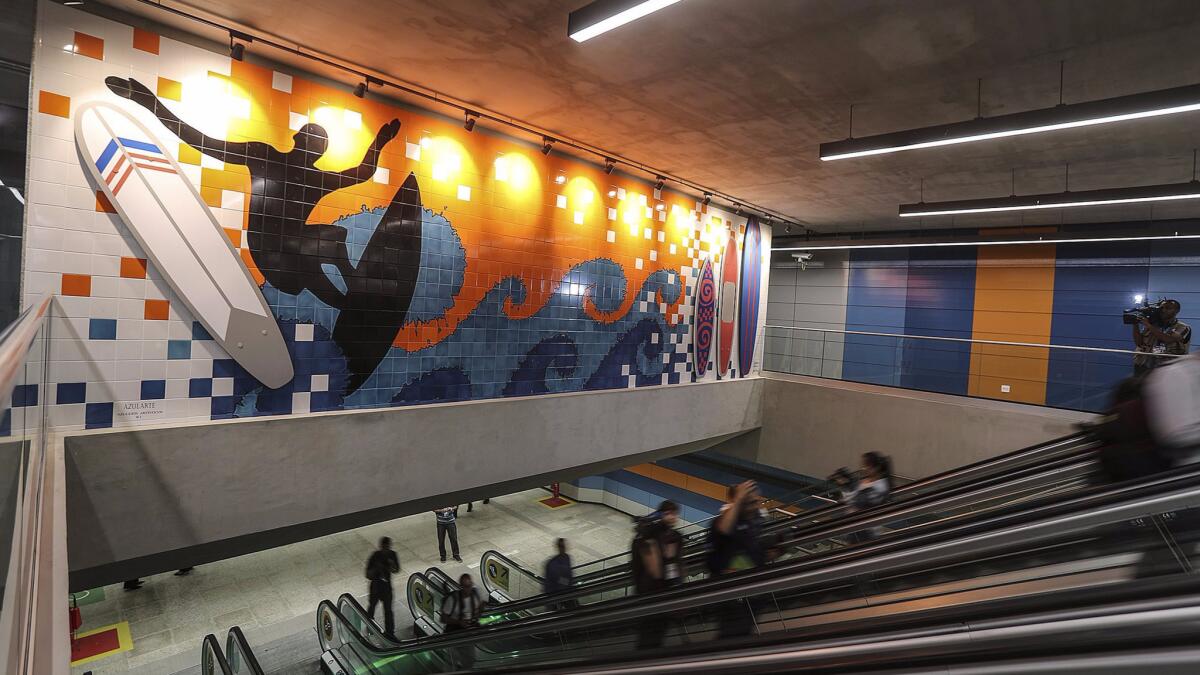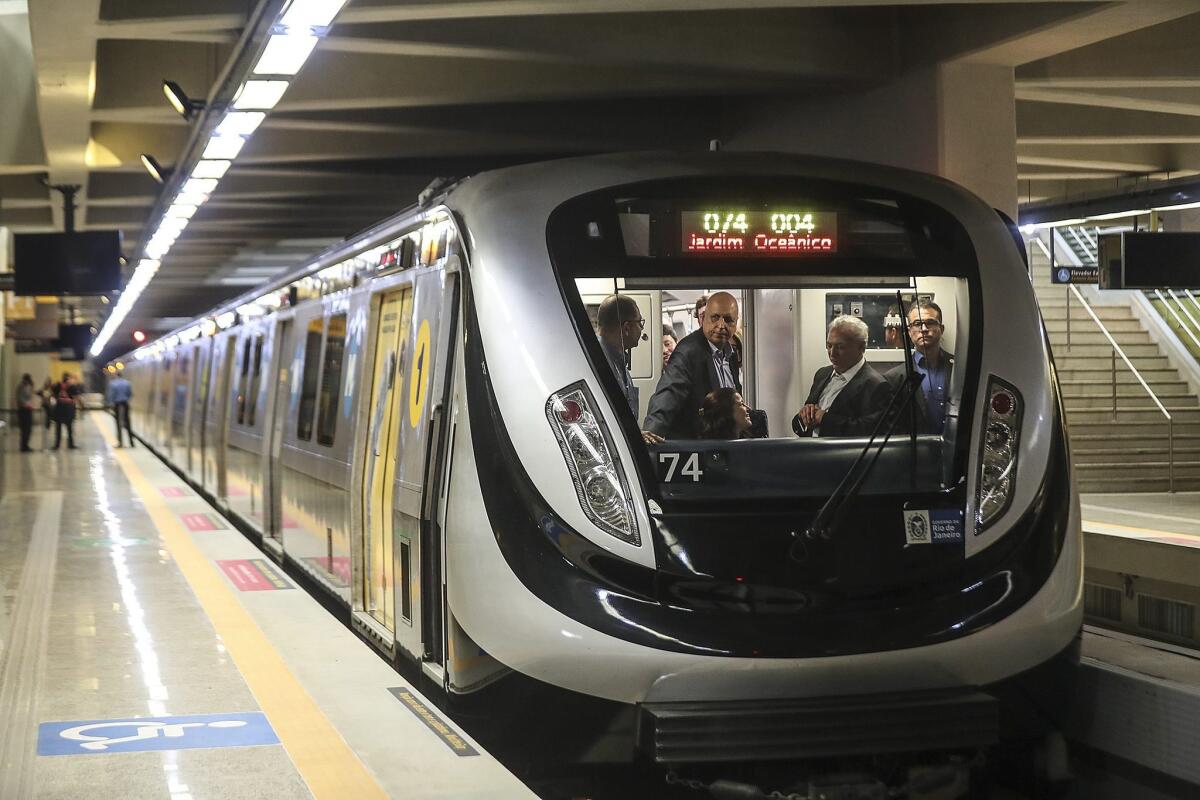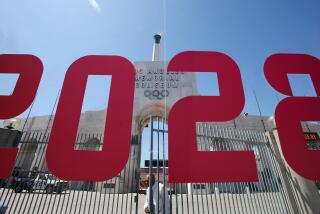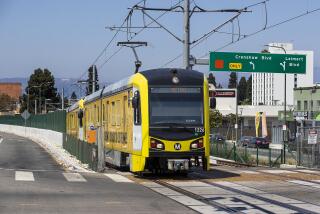Rio’s Olympic legacy: too few public projects, often in well-off areas

During the Olympics, Rio’s new Line 4 metro extension ferried fans to events and served to connect people across the city. Tourists and locals riding the pristine trains struck up conversations, exchanged stories and added each other to Facebook.
“It’s excellent. It’s a huge jump forward for mobility in Rio,” said Humberto Marcolini, 37, a client relations manager who lives a few blocks from the new Ocean Garden metro station.
But the games ended Sunday, and now the entrance is blocked by a small fence and guarded by two metro employees.
“I haven’t actually been on it yet myself,” Marcolini added. “They opened it early, provisionally, only for Olympic ticket holders. They’ll reopen it for the Paralympics. Then the actual population will get it in October or November, hopefully.”

In many ways, Line 4 sums up the effect of public improvements made as Rio de Janeiro prepared to host the first Olympiad in South America. It did not open on time, will need more improvements, and is concentrated between some city’s richest neighborhoods.
The Olympics brought long-term investments to the city and surrounding state, most notably in transportation. Experts and locals agree the city is better for it. But often, the improvements are not enough, came late and will benefit Brazil’s most privileged residents. Line 4 links the famous Ipanema beach with the upscale Barra da Tijuca neighborhood.
“The transportation improvements made over the last six years are a serious step forward. We haven’t had investment like this since the ‘70s. But they’re not enough. We need more improvement over the next two decades. It’s like we were at the bottom of the well, and the Olympics allowed us to jump to near the top, to be able to breathe a bit, and hopefully make plans,” said Ronaldo Balassiano, professor of transportation engineering at the Federal University of Rio de Janeiro.
Whether those plans go forward depends on domestic pressure and political will, added Balassiano, who says that even though Barra da Tijuca and the Zona Sul beach areas are elite neighborhoods, not only the rich will benefit. “There are also a large number of people who go to that region every day, to work as maids, domestic workers, assistants, or in apartment buildings, who will be most likely to use public transportation,” he said.
See more of our top stories on Facebook »
Many believe delays to the Olympic legacy projects were a result of a small budget and organization problems inherent to a Brazil mired in an economic crisis. But the concentration of works around Barra da Tijuca may have been a result of the nature of the Olympics themselves.
Many potential visitors from rich countries like the U.S. were afraid of crime and disease even when planning to visit some of South America’s most exclusive communities, and local organizers ended up making their best even better to accommodate Olympic tastes.
In Barra, the area directly around the main sporting events, public authorities removed the small, poor community of Vila Autodromo, to make way for a parking lot, and handed the contract for the Olympic Village to two wealthy corporations, both of which donated to Mayor Eduardo Paes’ campaigns and one of which has already admitted to large-scale corruption surrounding the state-run Petrobras oil company. The Olympic Village will become luxury apartment buildings.
The city says that for each dollar spent on athletic facilities, $5 were spent on long-term city improvement. By 2017, Rio says, the city will have added 105 miles of rapid bus lanes equipped with new fleets, over 62 miles of new highways, and a new subway line. It also aims to upgrade the city’s dilapidated port, and added flood control for the region.
The plans for Rio 2016 were inspired by the 1992 Barcelona Olympics, which are considered some of the most successful in recent history at providing the host city with lasting upgrades.
Although many improvements in Rio benefited well-off areas, Games organizers also distributed events across other parts of the city, such as the dilapidated downtown area near Maracanã stadium, site of the glittering closing ceremony, and the more distant Deodoro neighborhood, which held sometimes poorly attended equestrian events.
But Rio 2016 certainly had its local critics. Groups like “The Exclusion Games” and “The Popular Committee for the World Cup and Olympics” staged small protests alleging the Olympics meant pushing aside the poor and pouring public money into projects that were either unnecessary or benefited allies of political elites.
The legacy of the Olympics is overall negative, and they have made the city more exclusionary and unequal
— Giselle Tanaka
“The legacy of the Olympics is overall negative, and they have made the city more exclusionary and unequal. There was an inversion of priorities, and the real benefactors were a small group of construction companies and landowners linked to Eduardo Paes,” said Giselle Tanaka, who was involved in both groups.
“The middle and lower classes were pushed aside,” Tanaka said. “A lot of money was invested in either temporary installations, or to push up the value of land that was empty – like the Olympic Park – while the rest of the city is still left with serious problems with basic sanitation or electricity.”
The failure to clean up sewage in Guanabara Bay was a result of a failure to provide basic water treatment for a number of communities—outside the city of Rio and therefore outside of Paes’s control—and the risk of health problems to sailors and rowers was considered one of the biggest failures in preparation for the Games.
Over the last two years, Brazilian federal investigators have uncovered sprawling, multi-billion dollar corruption schemes which have led to the imprisonment of many of the country’s economic and political elites. They uncovered corruption linked to the construction of stadiums for the 2014 World Cup.
In an interview with the Los Angeles Times before the Games, Paes insisted the Olympics had been done a different way. “From the beginning, we were always guided by the mandate that these would be the “Legacy Games.’ Save city money, and no white elephants,” he said. “These Olympics brought a lot to the city. There have been no scandals, and there was no over-billing.”
There have been no accusations of corruption so far, and residents and experts have seen the beginnings of needed improvements in the city. But many also say it’s too soon to know if these really have been the Legacy Games.
“It should be great,” said Marcolini, the client relations manager, referring to the metro stop near his house. “When it actually opens.”
Bevins is a special correspondent.
ALSO
Rio Games: A challenge met, although it wasn’t easy
Armed forces ‘pacified’ Rio’s slums, but as Olympics approached, the gangs came back
In Rio, poor families are pushed out of their neighborhoods to make way for the Olympics
More to Read
Start your day right
Sign up for Essential California for news, features and recommendations from the L.A. Times and beyond in your inbox six days a week.
You may occasionally receive promotional content from the Los Angeles Times.






